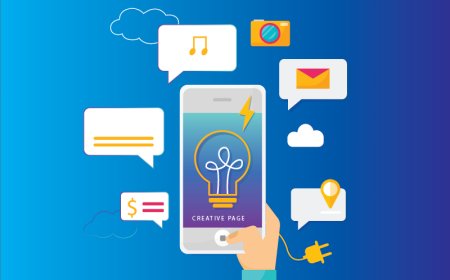From Buzzword to Necessity: The Chat GPT Detector Trend Explained
From novelty to necessity: discover why Chat GPT detectors are essential today, how they work, and how to choose the right AI text detector tools ai for you.

Introduction: Why a Detector Mattered Yesterday (and Needs to Matter Today)
Imagine youre scrolling through your inbox and spot an email pitch so polished it almost reads like Shakespeare in binary. You click reply, only to discover it was generated by an ai text generator youve never even heard of without a human fingertip in sight. Welcome to 2025, where artificial intelligence tools like Chat GPT online have become so good at mimicking our style, tone, and quirks that distinguishing human from machine sometimes feels impossible. Thats why the chat gpt detector has gone from a buzzy afterthought to an essential part of your toolkit. Today, Ill walk you through how this once fringe ai tool has blossomed into a career-saving ally and why every IT professional (yes, even you!) should understand how it works.
The Rise of AI-Generated Content: From Fun Experiments to Everyday Reality
Just a few years back, AI text felt like a novelty an amusing parlor trick youd share on LinkedIn for kicks. Remember the first time you tried an ai text generator to craft a blog intro? It probably produced something serviceable with that telltale robotic pace. Fast forward to today, and AI-crafted copy can rival seasoned copywriters. Weve seen everything from press releases to college essays tumble out of these tools ai in seconds flat.
Relatable example: Last month, I tested a new prompt on a popular chat gpt online platform. Not five seconds later, I had a 500?word product description so slick your local marketing agency would blush.
Why it matters: When content quality is this high, how do we know if an article or a rsum truly represents a persons work? Thats where the ai text detector steps in.
Enter the Chat GPT Detector: What It Is and What It Isnt
At its core, a chat gpt detector is an ai tool designed to analyze writing patterns, word choice, and statistical markers that typically accompany machine-generated text. But lets clear one misconception: its not a magic lie detector. Instead, think of it as a nuanced filter that flags content for further review.
1. Pattern recognition: AI tends to favor certain phrasing structures; detectors learn these fingerprints.
2. Probability scoring: Behind the scenes, algorithms calculate the likelihood that a given sentence was spun out by a model rather than a human.
3. Contextual cues: Some advanced artificial intelligence tools even look for context mismatches like overly formal language in a casual blog post.
Real talk: I once ran a few paragraphs of my own writing through an ai text detector, and it flagged me your friendly neighborhood blogger as probably AI-generated. The lesson? Detectors are improving but not infallible. Human oversight remains crucial.
How These Tools Work Under the Hood
If youre the curious type (and as someone exploring an IT career, you should be!), heres a peek under the hood:
Training data: Detectors train on vast corpora of both human-written and AI-generated text.
Feature extraction: They identify signatures like sentence length variance, punctuation habits, and lexical diversity.
Neural network classification: A lightweight neural net then classifies inputs, outputting a confidence score usually a percentage chance the text was machine-made.
Think of it like a weather forecast: a 70% chance of AI origin doesnt guarantee stormy skies, but its a strong warning to pack an umbrella (or, in this case, dig deeper into the contents provenance).
Real-World Applications: From Classrooms to Newsrooms
1. Education: Professors deploy chat gpt detectors to ensure essays reflect student effort, not just clever prompts.
2. Journalism: Newsrooms use these tools ai to flag suspicious PR pitches or ghostwritten articles masquerading as first?hand reporting.
3. Corporate Compliance: Companies screen internal communications to uphold authenticity and protect against inadvertent brand misrepresentation.
Storytime: A friend in HR once discovered that a batch of candidate cover letters all shared eerily similar turns of phrase. A quick pass through an ai text detector confirmed her suspicion: many applicants submitted AI?spun resumes. The result? They revamped their hiring policy to require interview?style video submissions instead a clever workaround that reintroduced the human element.
Choosing the Right AI Text Detector for Your Needs
With dozens of ai text detector options out there, picking one can feel like navigating a crowded bazaar. Here are three tips:
1. Accuracy vs. Speed: High?precision detectors may need more processing time fine for academic audits, less ideal for real?time chat moderation.
2. Customization: Look for detectors that allow you to train on your own style guide or industry jargon.
3. Integration: APIs that plug directly into your CMS, LMS, or internal chat system save you from copy?and?paste drudgery.
Striking a Balance: Trust but Verify
As with any artificial intelligence tool, maintain a healthy dose of skepticism:
Dont blind?side writers: Use detectors as feedback tools, not punitive devices.
Combine methods: Pair algorithmic flags with human review to reduce false positives.
Stay updated: AI evolves rapidly what fooled detectors last year may be childs play for them today.
Conclusion: Embracing the Next Phase of AI Collaboration
The chat gpt detector trend reminds us that as AI grows more powerful, our responsibility to preserve human authenticity grows too. Whether youre an educator, writer, or IT professional charting your career path, mastering these ai tools means staying one step ahead ensuring technology amplifies our humanity rather than eclipsing it. Ready to fortify your workflow? Start experimenting with a reliable ai text detector today, and give your audience the genuine voice they deserve.




























